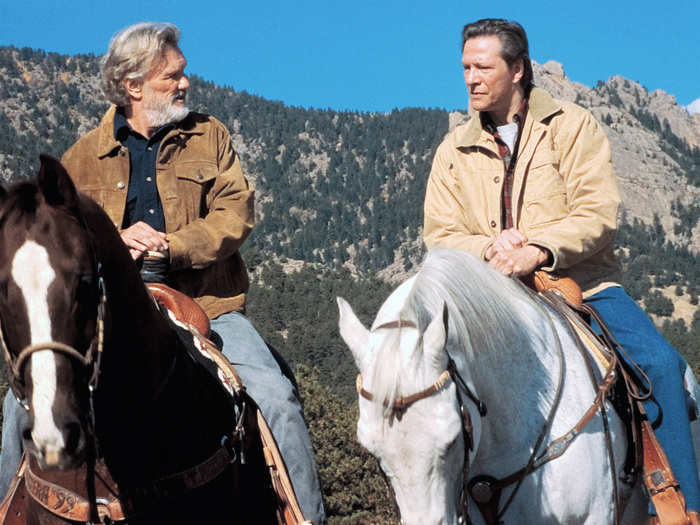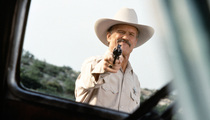With a few details altered, the career of John Sayles could have resembled the exemplary arc of a commercial filmmaker: like Coppola and Scorsese, he cut his teeth with the King of the Bs Roger Corman, wrote a precursor to what would become ET The Extraterrestrial, and became a so-called script doctor sought after by the big Hollywood studios. But the stories that interest Sayles could only make him, definitively, a maverick (and very happy to be one): his eighteen feature films form a counter-history of America which could only flourish within a totally independent production system- a system he very often finances, Cassavetes-style, through his job as a shadow worker in mainstream cinema. Sayles's work, literary and cinematographic, covers many genres, as if each story had to find its own form (and American state): western (Texas), melodrama (Louisiana), sports film (Illinois), science fiction (New York), teen movie (New Jersey), castaway survivors (Alaska), road movie (Mexican border), political fiction (Colorado), ensemble film (Florida) and labor history (West Virginia)... And at the same time, the filmmaker breaks free of genre to better explore the common thread of all his work: that at the level of a community, a city, a group of friends or even in a romantic relationship, American reality is structured by class relations (« the big American secret » as a journalist once said to him) cleverly concealed by the official story. Sayles-style cinema, the medium used as critique, places itself at the confluence of several disciplines: literature, ethnography, sociology, history and political science.
A prolific filmmaker
It was with $30,000 in his pocket that he made his first film, Return of the Secaucus 7, a portrait of a group of friends who meet for a weekend. The opportunity for a collective assessment, both intimate and political. Between amorous intrigues and disillusionment, this masterpiece of the « film of friends » (New Hampshire) asserts itself as a manifesto for the work to come: a way of organically mixing fiction and politics, as during a game of Charades where the women in the group also discuss the apalling inadequacies of American sex education.
Already his camera is not merely a mouthpiece for the director, but eagerly seeks to adopt all the points of view. Even inside a shot, it slips, gets distracted, tries to record everything, and with one obsession in mind: that each character has time to tell their story. This plan becomes a sanctuary, the temple of an obstinate but sometimes overwhelming attempt to listen; making a tour of the characters, of a place, of a city and, on the scale of the collected work here, of a continent. It is the principle that will guide all his films, and more particularly his choral works: Sunshine State, City of Hope, Silver City, so many cross-sectional portraits of a city and its inhabitants which recall the great people-films of Robert Altman and prefigure the sociological and Balzacian descriptions of showrunner David Simon (The Wire, Show Me a Hero). « The Whole world is just one big union »
A single story is not enough either to make fiction or to tell the whole truth-simple truth is a dead end. So the choral film becomes an aesthetic and political necessity to avoid falling into the fetish of a single point of view or story arc, a great unifying narrative sent from above that everyone is meant to adopt. And when there is only one hero, then he is an observer, alter ego of the filmmaker, immersed in life: in The Brother from Another Planet, which has become a cult film in the US, the viewer follows the trajectory of a mute black alien who lands in Harlem via Ellis Island. He walks, listens, watches, imitates and records like a child ethnographer. The arc of the movie resembles a fable about slavery and assimilation, and proves superbly that Sayles always manages to maintain this fragile balance between fictional liberty and didacticism.
On the map of American cinema, this filmmaker seeks to inhabit the territory in question, finding there a hard American reality that an excess of celebratory storytelling has managed to stifle. His films reiterate his vision of a people fundamentally divided into ethnic communities and pressure groups who regard each other like attack dogs- social classes with divergent interests, orphans from an illusory armistice. On several occasions, the films organize splendid face-to-face meetings between two characters from the same ethnic community but who do not belong to the same social class, and sometimes the reverse. Are they allies or enemies? Conflicts of loyalty, unresolved, rarely acknowleged in mainstream cinema.
« I Know how to make a more popular story. but then it becomes a lie. »
This historical lucidity necessarily prevents the release of the blinding endorphins of the happy ending. The sports film is thus deprived of its triumphalist conclusion (Eight Men Out), the romance of the teen movie is doomed by the social divide (Baby, It's You), female emancipation is won at the cost of great sorrow (Lianna). The filmmaker never succumbs to the sirens of restorative fiction, and this lucidity mixed with pessimism will culminate in his masterpiece: Matewan, produced in the middle of the Reagan era, the true story of a community of miners who, in 1920, organized into a union to protest against dngerous conditions and pay cuts. A bloody and forgotten chapter of the American workers' struggles, in Matewan John Sayles travels in the wake of Howard Zinn, Marxist historian of the great American story told as an endless struggle fought with unequal arms, espousing the point of view of the rabbits rather than the hunters.
As long as there are still stories, his films seem to tell us, there will be no End to History. To survive, we must therefore, tirelessly, continue to tell: legends (Passion Fish), fantastic tales (The Secret of Roan Inish), or a past made up of very real struggles and oppressions spoken of only when the rulers are not listening. The motif is so omnipresent that it creates a secret solidarity between all the films, between the characters, between the living and the dead. To be faithful to the past is to make oneself the worthy avatar of an immemorial class struggle, to revive and embrace vital conflict, the one thing every American inherits.
« There is a politician in each of us »
This struggle often takes the form of an updated, Marxist western: real estate developers without faith or law, evicting the inhabitants of a neighborhood to develop luxury hotels, shopping malls and golf courses- the March of Progress in the minds of the victors (City of Hope). A galloping gentrification whose momentum is slowed by the exhumation of a Indian cemetery and a history older than the living or their ambitions, (Sunshine State). In Silver City, the rise of a corrupt politician is interrupted by the discovery of a corpse retrieved from a lake. With no recourse on dry land, Sayles appeals to the depths, to the fictions buried under water and the earth, in an almost mystical relationship to the elements.
In Limbo, a woman, her new companion and her daughter are stranded on a remote island in Alaska. The teenager has found, hidden in the corner of a makeshift shelter, the diary of an inhabitant of the island abandoned there. Each evening, a ritual takes place which helps the trio to survive: by the fireside, the man and the woman listen to the young girl read a few pages of this recovered story. One evening the mother opens the diary and realizes that it is mostly made up of blank pages- her daughter has made it all up. But that same evening, without saying anything, the mother again listens to her religiously. « Everybody is a politician » we hear in another film, and if all of Sayles' work features heroes aware of their place, their class and their struggle, there is always a moment, almost sacred, when we can – for a while – let our guard down. On an island, in a cemetery, near the sea or a fire where forgotten and magical and tiny and perhaps false stories hide, we can once again believe in everything we are told.
Translated by John Sayles

